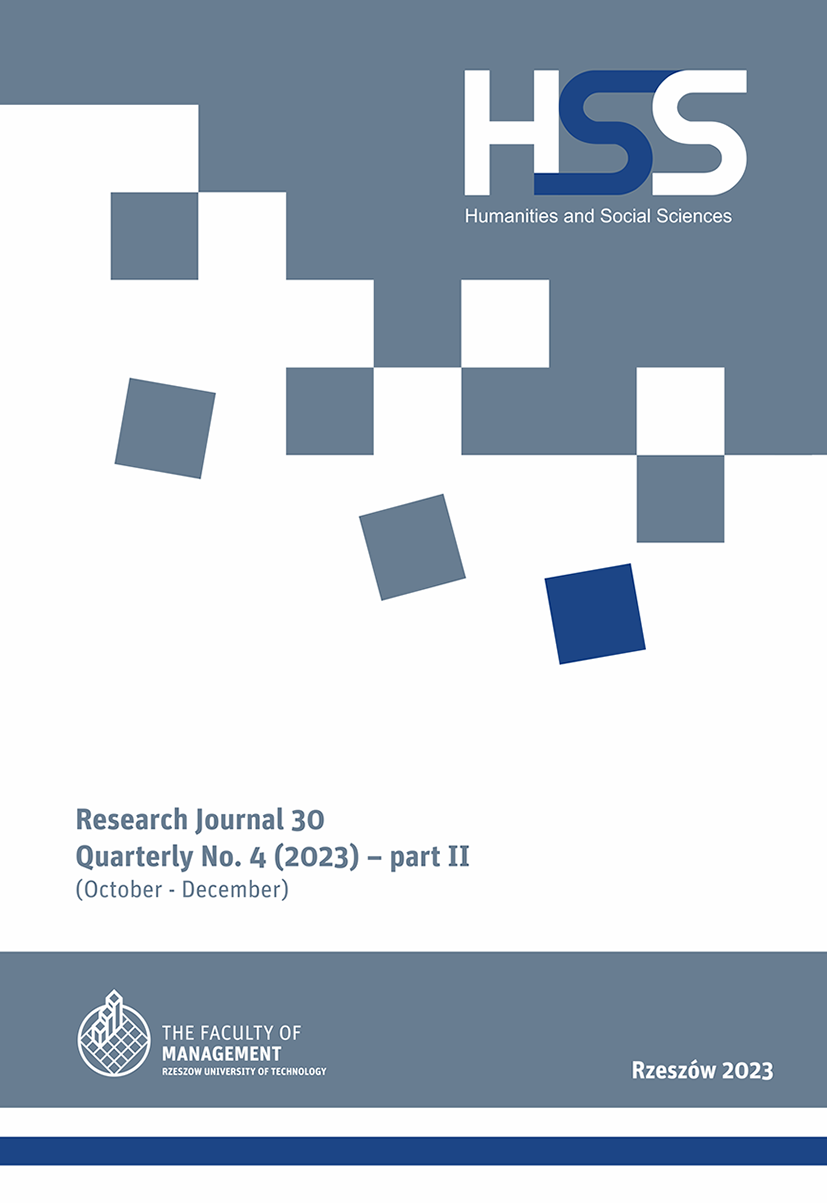Abstract
The main objective of the research was to assess the usefulness of manufacturing company simulators as tools supporting leadership in strategic management. A management simulator was built on the convention of the Systems Dynamics method. The research was carried out in three production companies located in the Podkarpackie Voivodeship in Poland. Through meetings with leaders and workers, a simulation model of the system of basic processes of a manufacturing company was built. The resulting model was the basis for developing the architecture of the manufacturing company simulator (microworld). While working with the simulator, the main focus was on efficiency in order fulfillment. The research shows that it is possible to identify the norms controlling the system that directly affect changes in the above aspect of strategic management.
References
Baran, M. (2013). The modeling process of the materials management system in a manufacturing company based on the System Dynamics method. “Journal of Entrepreneurship, Management and Innovation”, 9 (2). DOI: 10.7341/2013925.
Baran, M., Stecko, J. (2013). Symulacyjny model gospodarki – przypadek przedsiębiorstwa Fotosystem. „Ekonomia i Nauki Humanistyczne”. Vol. XX. DOI: 10.7862/rz.2013.hss.12.
—— (2014). Symulacyjny model produkcja – zbyt w konwencji metody Dynamiki Systemów. Przypadek przedsiębiorstwa Fotosystem. „Modern Management Review”. Vol. XIX. DOI: 10.7862/rz.2014.mmr.1.
—— (2015). Simulation model of labor force for the manufacturing company based on System Dynamics. “Modern Management Review”, Vol. XX. DOI: 10.7862/rz.2015.mmr.50.
—— (2016). Simulations of production – delivery models using conventional methods of Dynamic Systems: Zelgraf company as a case study. “Modern Management Review”. Vol. XXI. DOI: 10.7862/rz.2016.mmr.25.
Diehl, E.W. (1992). Participatory simulation software for managers: The design philosophy behind MicroWord Creator. “European Journal of Operational Research”, 59(1). DOI: 10.1016/03772217(92)90017-4.
Forrester, J.W. (1961). Industrial Dynamics. M.I.T. Press: Cambrigde.
Kreutzer, B. (2018). Ithink ®: the visual thinking tool. “Systems Thinker”. Access on the internet: The Systems Thinker – ithink®: The Visual Thinking Tool – The Systems Thinker
Łatuszyńska, M. (2015). Modelowanie i symulacja w zarządzaniu produkcją. „Technologie informacyjne”, 12. DOI: 10.33141/po.2015.12.07.
Łukaszewicz, W. (1975). Dynamika systemów zarządzania. Warszawa: PWN.
People Express (2023). Access on the internet: https://sdgamesonline.com/game-info/People-Express
Powersim Software. (2023). Access on the internet: Home – Powersim Software.
Senge, P.M. (1989). Organizational Learning: A New Challenge for System Dynamics. Access on the internet: senge229.pdf (systemdynamics.org).
—— (2006). The Fifth Discipline: The Art & Practice of The Learning. Kraków: Wolters Kluwer.
Senge, P.M., Kleiner, A., Roberts, C., Ross, R.B., Smith, B.J. (2008). The Fifth Discipline. Fieldbook. Kraków: Wolters Kluwer.
Śliwa, K.R. (2001). O organizacjach inteligentnych i rozwiązywaniu złożonych problemów zarządzania nimi. Warszawa: Oficyna Wydawnicza WSM SIG.
Souček, Z. (1979). Modelowanie i projektowanie systemów gospodarczych. Warszawa: PWN.
Stella® Online™ (2023). Powerful modelling and diagramming capabilities on any web browser. Isee Systems. Access on the internet: Stella Online (iseesystems.com).
Sterman, J.D. (2000). Business Dynamics: Systems Thinking and Modeling for a Complex World. New York: McGraw-Hill.
Vensim (2023). Access on the internet: Software – Ventana Systems (vensim.com).


